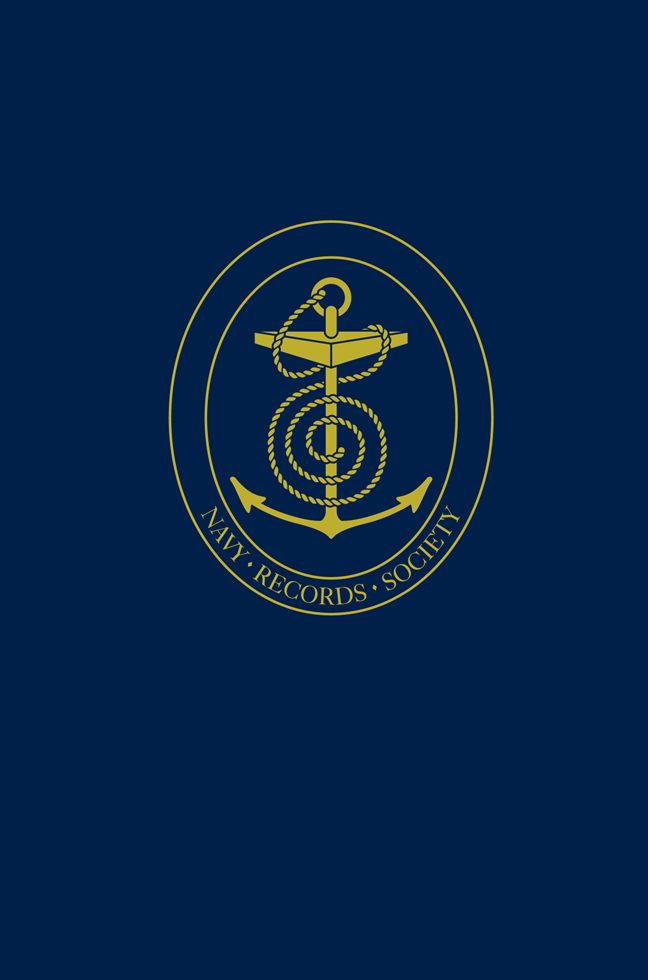Book contents
- Frontmatter
- Dedication
- Contents
- List of Plates
- Preface
- List of Abbreviations
- I The Provision of Ships for Edward I's Campaigns in Scotland, 1300–1306: Barges and Merchantmen
- II Lord Admiral Lisle and the Invasion of Scotland, 1544
- III The Journal of the Voyage of the Marigold to Iceland, 1654
- IV Neutrality, Sovereignty and Jurisdiction: Two Cases in the Admiralty Court, 1798–1805
- V The Supply of Timber for the Royal Navy, c.1803–c.1830
- VI The Journal of Lieutenant George Bedford, 1835–36: Surveying on the West Coast of Africa
- VII The Journal of Lieutenant Charles Knowles in the River Niger, 1864
- VIII The Diary of Signal Bosun Henry Eason: The Naval Brigade in the Zulu War, 1879
- IX The Autobiography of Chief Gunner Alexander Grant: HMS Lion at the Battle of Jutland, 1916
- X Australian Naval Defence: Selections from the Papers and Correspondence of Captain W. H. C. S. Thring, 1913–34
- XI The Relief of Admiral North from Gibraltar in 1940
- XII The Development of an Independent Navy for Australia: Correspondence between the First Naval Member and the First Sea Lord, 1947–59
- Contents of Previous Naval Miscellany Volumes
- Index
- Miscellaneous Endmatter
XII - The Development of an Independent Navy for Australia: Correspondence between the First Naval Member and the First Sea Lord, 1947–59
Published online by Cambridge University Press: 05 March 2024
- Frontmatter
- Dedication
- Contents
- List of Plates
- Preface
- List of Abbreviations
- I The Provision of Ships for Edward I's Campaigns in Scotland, 1300–1306: Barges and Merchantmen
- II Lord Admiral Lisle and the Invasion of Scotland, 1544
- III The Journal of the Voyage of the Marigold to Iceland, 1654
- IV Neutrality, Sovereignty and Jurisdiction: Two Cases in the Admiralty Court, 1798–1805
- V The Supply of Timber for the Royal Navy, c.1803–c.1830
- VI The Journal of Lieutenant George Bedford, 1835–36: Surveying on the West Coast of Africa
- VII The Journal of Lieutenant Charles Knowles in the River Niger, 1864
- VIII The Diary of Signal Bosun Henry Eason: The Naval Brigade in the Zulu War, 1879
- IX The Autobiography of Chief Gunner Alexander Grant: HMS Lion at the Battle of Jutland, 1916
- X Australian Naval Defence: Selections from the Papers and Correspondence of Captain W. H. C. S. Thring, 1913–34
- XI The Relief of Admiral North from Gibraltar in 1940
- XII The Development of an Independent Navy for Australia: Correspondence between the First Naval Member and the First Sea Lord, 1947–59
- Contents of Previous Naval Miscellany Volumes
- Index
- Miscellaneous Endmatter
Summary
The relationship between Australia and Britain is a complex one. There are links between all areas of government and society in the two countries, of which the military, diplomatic and economic spheres have received the greatest attention. The relationship is perhaps more endlessly fascinating from an Australian perspective, as Britain was, and in many ways remains, the frame of reference from which Australia has developed its own national character. With the use of hindsight and a further evolved national perspective, Australian historians have in part characterised people and institutions by their differences from their British equivalent, as they sought to identify what was specifically Australian. Such interpretations are unsurprising and, in the main, do not diminish either the historians or their work, but they do leave some people and institutions with simplified, sometimes depreciatory characterisations which are not sustainable from the historical record. One institutional example is the Royal Australian Navy, which has often been described mainly in terms of its links to the Royal Navy and Britain. While deep and abiding links most certainly existed, the tensions and complexities of the relationship that existed are often not appreciated, nor is the context in which events took place; perhaps the result of the often discussed separation between military and other mainstream forms of history. A documentary source that does illustrate the tensions and complexities of the relationship (if not often the broader national context) is the correspondence between the professional heads of the Royal Australian and Royal Navies, the First Naval Member and the First Sea Lord.
First Naval Members and Chiefs of Naval Staff
The first Chief of Naval Staff after the Second World War was Admiral Sir Louis Hamilton, RN [1–12]. He was the last British officer loaned to the Australian Navy to be its professional head. Hamilton was well connected in both the RN and the Royal Family, serving twice in the Royal Yacht. He was a ‘salthorse’ (not sub-specialised into gunnery, communications or other warfare disciplines) who, from the end of the First World War to the middle of the Second, commanded four destroyers, three cruisers, the Home Fleet's destroyers and then the First Cruiser Squadron which was his last seagoing command. As Flag Officer, First Cruiser Squadron, Hamilton commanded the close cover for the convoy PQ17. Subsequently he was the Flag Officer Malta and Central Mediterranean Area.
- Type
- Chapter
- Information
- The Naval Miscellany , pp. 511 - 670Publisher: Boydell & BrewerFirst published in: 2024



